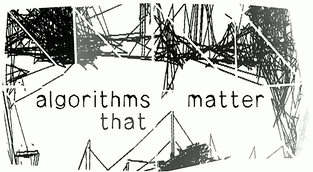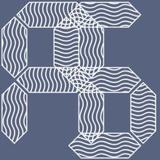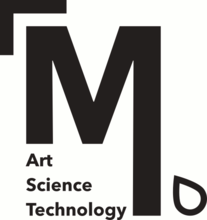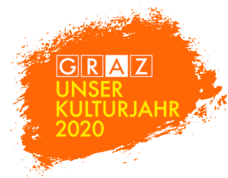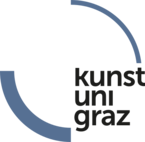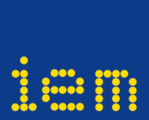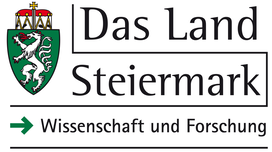Exhibition in the framework of Algorithmic Segments
| Opening: | 31.07.2020, 19:00 h |
| Exhibition: | 01.08.–28.08. (Tue–Fri 15–18 h) |
| Location: | esc media art lab, Bürgergasse 5, 8010 Graz |
in|filtration
Ein|sickerung
A collaboration between the Master Module in Art, Science and Technology (MAST) at the Institute of Spatial Design / TU Graz, and Algorithms that Matter (Almat) at the Institute of Electronic Music and Acoustics (IEM) / KUG Graz. Exhibition esc media art lab 2020, within the parcours Algorithmic Segments - Graz Kulturjahr 2020.
[en]
in|filtration _ Ein|sickerung is a space and sound installation dealing with persistent and inconspicuous processes of exchange, in which surfaces and membranes between adjacent actors and systems are not only regarded as forms of dissociation, but as partially permeable layers, thus allowing imaginings, signals, materials, light and sound to propagate and melt the identities of the separate. A translucent and sensorial space/body acts as a vessel for sound structures that migrate between two seemingly opaque computer systems. The project begins with an understanding that space is a basic precondition, not just for architecture, but also for our lived environment. According to this perspective, architecture is not just about buildings filling up space, but about the production of space. The physical space is interwoven with an algorithmic space, sounding and sensing its environment. Algorithmic space is not primarily the result of form generation but of an intrinsic speculative movement and the interaction with humans who write code and experiment with it. Making visible and audible the exchange processes between humans and machines becomes a means of critically articulating this space.
In this installation, the visual, sonorous and algorithmic spaces are partitioned into twelve segments along an axis, each of which is thus in contact with its neighbouring segments. While segmentation is often understood as a method of analysis—for instance in biology to disassemble organisms—it is here regarded as a form of synthesis and spatialisation, putting side by side without hierarchy. In the social realm, segmentary developments are often seen as problematic, as communities become enclaves isolated from each other, but the spatialisation performed here emphasises the “equivalidity” (gleiche Gültigkeit) over indifference (Gleichgültigkeit). When observing the world on global scale, perhaps general validity (Allgemeingültigkeit) is no longer a property sustained by contemporaneity. The question then becomes, how we can imagine new forms of infiltration, creating “weak ties” that have the potential to produce emergent shared meaning.
in|filtration _ Ein|sickerung is a collaboration between EU project MAST (Master Module in Art, Science and Technology) at the Institute of Spatial Design of TU Graz, FWF project Algorithms that Matter (Almat) at the Institute of Electronic Music and Acoustics (IEM) of KUG Graz, and esc media art lab. Initial designs of a space installation were created in April 2019 during the workshop Algorithmic Space Studies by students of the universities of Nova Gorica (SLO), Madeira (PT) and TU Graz. Out of six projects, the design “filtered” by Xhylferije Kryeziu, Carolina Silveira, Feni Susic, and Gaja Znidarsic was selected to be now realised in a further treatment and at scale 1:1. The visual installation is implemented in connection with a new algorithmic sound installation by Hanns Holger Rutz and David Pirrò (Almat). The spatial implementation is created with the support of Nayarí Castillo and Franziska Hederer. The sensor design is created by Richard Dank.
This interdisciplinary project is an experiment taking place within the debate on interactions between art, science, and technology. The exhibition is part of the Graz Cultural Year 2020 parcours Algorithmic Segments.
[de]
in|filtration _ Ein|sickerung ist eine Raum-Klanginstallation, die sich mit beharrlichen und unmerklichen Austauschprozessen befasst, bei denen die Oberflächen und Membranen zwischen benachbarten Akteuren und Systemen nicht nur als Formen der Abgrenzung betrachtet werden, sondern als teilweise durchlässige Schichten, durch welche sich Vorstellungen, Signale, Materialien, Licht und Klänge ausbreiten und die Identitäten des Getrennten verschmelzen. Ein transluzenter und sensorischer Raumkörper fungiert als Gefäß für Klangstrukturen, die zwischen zwei vermeintlich opaken Computersystemen hin und her wandern. Das Projekt geht vom Verständnis des Raumes als fundamentale Vorbedingung aus, nicht nur im architektonischen Sinne, sondern auch für unsere Lebensumwelt. Dieser Perspektive folgend befasst sich Architektur nicht nur mit Gebäuden, die den Raum ausfüllen, sondern mit der Produktion von Raum an sich. Der physische Raum wird mit einem algorithmischen Raum verwoben, er horcht und tastet seine Umgebung ab. Algorithmischer Raum ist nicht primär das Ergebnis einer Formerzeugung sondern einer spekulativen Bewegung und der Interaktion zwischen Menschen, die Code schreiben und damit experimentieren. Die Austauschprozesse zwischen Menschen und Maschinen sichtbar und hörbar zu machen wird zu einem Mittel, diesen Raum kritisch zu artikulieren.
In dieser Installation werden der visuelle, der klingende und der algorithmische Raum entlang einer Achse in zwölf Segmente zerlegt, so dass jedes von ihnen in Kontakt mit den benachbarten Segmenten ist. Während Segmentierung oft als eine Methode zur Analyse verstanden wird—zum Beispiel in der Biologie als Zerlegung von Organismen—wird sie hier als eine Form der Synthese und Verräumlichung betrachtet, als ein hierarchieloses Nebeneinandersetzen. Im Sozialen wird Segmentarität oft als problematisch empfunden, wenn Gemeinschaften zu Enklaven werden, die von einander isoliert sind; die hier gestaltete Verräumlichung jedoch betont die gleiche Gültigkeit gegenüber der Gleichgültigkeit. Wenn die Welt auf globaler Ebene beobachtet wird, findet man vielleicht keine Allgemeingültigkeit mehr, die das Zeitgenössische kennzeichnet. Die Frage lautet dann, wie man sich neue Formen der Einsickerung vorstellen kann, die „schwache Beziehungen“ erzeugen, welche nichtsdestotrotz das Potential haben geteilte Bedeutung hervorzubringen.
in|filtration _ Ein|sickerung ist eine Kollaboration zwischen dem EU-Projekt MAST (Master Module in Art, Science and Technology) am Institut für Raumgestaltung der TU Graz, dem am Institut für Elektronische Musik und Akustik (IEM) der Kunstuniversität Graz angesiedelten FWF Projekt Algorithms that Matter (Almat) und esc medien kunst labor. Im April 2019 sind während des Workshops Algorithmic Space Studies Entwürfe von Studierenden der Universitäten Nova Gorica (SLO), Madeira (PT) und der TU-Graz für eine Rauminstallation entstanden. Aus sechs Projekten wurde der Entwurf „filtered“ von Xhylferije Kryeziu, Carolina Silveira, Feni Susic und Gaja Znidarsic ausgewählt, um nun in Weiterbearbeitung und im Maßstab 1:1 realisiert zu werden. Die visuelle Installation wird dabei mit einer neuen algorithmischen Klanginstallation von Hanns Holger Rutz und David Pirrò (Almat) verbunden. Die räumliche Umsetzung wird mit Unterstützung von Nayarí Castillo und Franziska Hederer erarbeitet. Die Sensorsteuerung wird von Richard Dank gestaltet.
Dieses interdisziplinäre Projekt ist ein Experiment, das im Rahmen der Auseinandersetzung mit den Wechselwirkungen von Kunst, Wissenschaft und Technologie stattfindet. Die Ausstellung ist Teil des Graz Kulturjahr 2020 Parcours Algorithmische Segmente.

